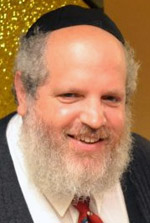Parshat BaMidbar – In the Desert/Numbers

CARLSBAD, California — This week we begin the fourth of the five books of the Torah, the book of BaMidbar. BaMidbar means ‘In the Desert’. It is also called Sefer HaPikudim, which translates as the Book of Numbers. The portion has the same name as the book itself.
We are taught that the name is indicative of the general content, and so we need to look into the name and find out what it tells us. Let us contextualize this book and how it fits in with the previous books of the Torah; Genesis, Exodus, and Leviticus.
Genesis tells us where we came from and what our role within the world would be. It traces the history of humankind and of the Jewish people. We ‘spend’ lots of time with our Patriarchs and Matriarchs, our role models and inspiration. We come to understand that we are their legacy and we come to love them and to be motivated to follow in their awesome footsteps.
We then transition into the book of Exodus. The Jews were cruelly oppressed and enslaved by the Egyptians, despite the fact, or perhaps because of the fact that Egypt had been saved through the good offices of the righteous Joseph. Through a series of awesome miracles the Almighty brought an end to the bitterness of slavery and miraculously ushered His nation to the foot of Mount Sinai, where they received the Torah. Some of the people slipped up and built and worshiped the Golden Calf, after which the Tablets were destroyed and the Divine Presence, known in Hebrew as the Shechinah, went into hiding (as it were). Plan ‘B’ was executed, where the people built the Tabernacle, a place where the Divine Presence could again be revealed, but in a more specific setting. The successful reconciliation takes place when G-d reveals Himself within the Tabernacle. The overall theme of this book is that ultimately, G-d is in the driver’s seat, and that His power can bring us from the lowest of lows to the highest heights.
The third book, the Book of Leviticus, details the laws of serving the Creator within the Tabernacle. This sacred task would be assigned primarily to the Tribe of Levi, hence the name Leviticus. The Torah goes into minute detail as to how the various sacrifices and other services would be accomplished in the Tabernacle. It is in this book that we find a clear cut picture of how G-d wants the Jewish people to serve Him within the Tabernacle and Holy Temple. The centrality of the Temple service is strongly emphasized and we come to appreciate the importance of following the prescription for a successful outcome.
And now we begin the book of Numbers, the book of BaMidbar. In the desert those Jews who are eligible for army service would be counted. In this book the Jews would have numerous dramatic events take place including horrific tragedies and sublime victories. Clearly, the emphasis on this all taking place in the desert is telling us something crucial.
A desert is also known as a wilderness. A wild place. A place where the rules of polite society are not followed. The desert is an extraordinarily harsh environment where it gets extremely cold and extremely hot. The sand of the desert is not conducive to agriculture, in fact, there are next to no nutrients in the sand, as opposed to the soil in other areas. Wild animals run amok and endanger the lives of human beings, who are not suited for desert life.
Yet it was precisely to the desert that G-d lead His people and had them dwell for 40 years. Why?
The answer is one we can all identify with, particularly during challenging times, like the present times. This life is not meant to be easy or simple. This life is meant to be a time of overcoming hardship, of viewing difficulties as opportunities. Yes, there will be failures, after all we are human and therefore fallible. But there will also be triumphs where we reveal the Presence of G-d even in the most inhospitable surroundings.
This portion and this book are here to tell us that we can (and must) do it!
With this in mind it is the perfect portion to read before the Holiday of Shavuot, which commemorates receiving the Torah on Mount Sinai. The purpose of the Torah, which was given specifically in the desert, is to transform the inhospitable, mundane, physical existence into a place that not only does not conceal G-dliness, but where the Divine Energy is revealed in every aspect of creation. Where can this be accomplished with greater effect than the desert?
And just who can accomplish this magnificent mission? To find out the answer to that question simply look into the mirror. The Torah says it when it tells us that we count!
Wishing everyone an uplifting, joyous, and HEALTHY Shabbos!
*
Rabbi Yeruchem Eilfort is Director of Coastal Chabads and Chabad at La Costa. Rabbi Eilfort welcomes readers’ comments and questions and may be reached at RabbiE@ChabadatLaCosta.com.